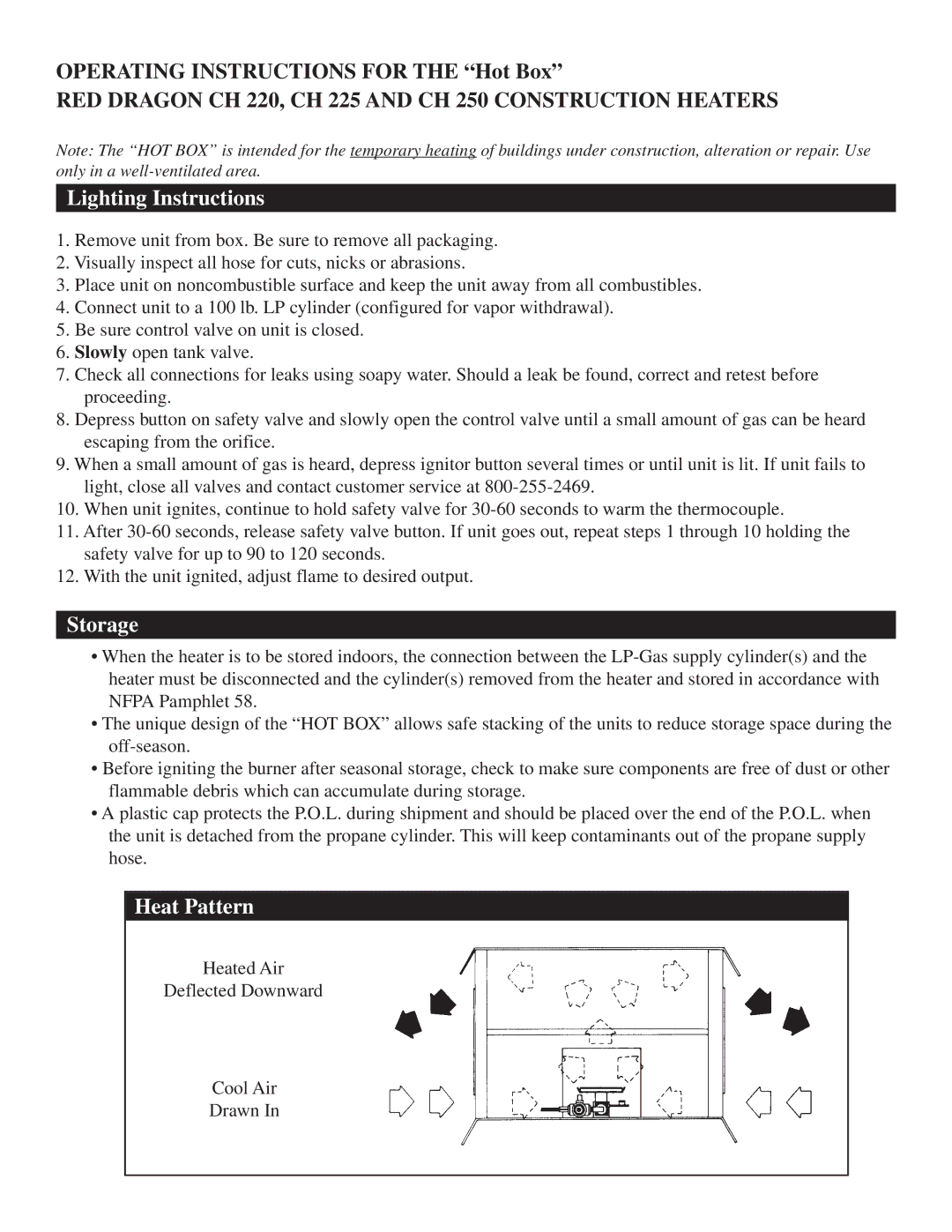
OPERATING INSTRUCTIONS FOR THE “Hot Box”
RED DRAGON CH 220, CH 225 AND CH 250 CONSTRUCTION HEATERS
Note: The “HOT BOX” is intended for the temporary heating of buildings under construction, alteration or repair. Use
only in a
Lighting Instructions
1.Remove unit from box. Be sure to remove all packaging.
2.Visually inspect all hose for cuts, nicks or abrasions.
3.Place unit on noncombustible surface and keep the unit away from all combustibles.
4.Connect unit to a 100 lb. LP cylinder (configured for vapor withdrawal).
5.Be sure control valve on unit is closed.
6.Slowly open tank valve.
7.Check all connections for leaks using soapy water. Should a leak be found, correct and retest before proceeding.
8.Depress button on safety valve and slowly open the control valve until a small amount of gas can be heard escaping from the orifice.
9.When a small amount of gas is heard, depress ignitor button several times or until unit is lit. If unit fails to light, close all valves and contact customer service at
10.When unit ignites, continue to hold safety valve for
11.After
12.With the unit ignited, adjust flame to desired output.
Storage
•When the heater is to be stored indoors, the connection between the
•The unique design of the “HOT BOX” allows safe stacking of the units to reduce storage space during the
•Before igniting the burner after seasonal storage, check to make sure components are free of dust or other flammable debris which can accumulate during storage.
•A plastic cap protects the P.O.L. during shipment and should be placed over the end of the P.O.L. when the unit is detached from the propane cylinder. This will keep contaminants out of the propane supply hose.
Heat Pattern
Heated Air
Deflected Downward
Cool Air
Drawn In
